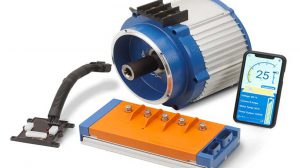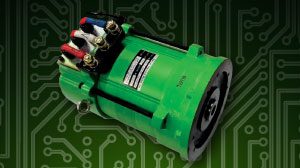By: Matt Vallez
As I am sure you are aware, electric golf cars are powered by rechargeable, lead acid batteries. These batteries are still the most economical way to power an electric golf car. Although other technologies are available, most likely in anyone’s lifetime that is old enough to read this article the lead acid battery will still is the power source for golf cars. That is just the way it is.
These batteries are by far the most popular battery used to power golf cars are vented, wet cell, lead-acid batteries, sometimes called flooded or traction batteries. Other options are also available; mainly AGM (absorbed glass mat) or gel batteries. The reason the vast majority of golf cars use wet cell batteries are the price. AGM or gel batteries can be 2.5 to 3 times the price of a similar wet cell option. The major golf cart manufacturers use wet cell batteries for most of their markets, although they generally provide AGM or gel cells as an option. AGM and gel batteries are also known as ‘maintenance free’ batteries. This is due to the fact that checking and maintaining water levels is unnecessary. All three battery types do an excellent job delivering power and have similar run time capabilities.
So what is the down side of using the more economical wet cell batteries? There are a couple of things to consider. First, wet cell batteries require regular maintenance mostly in the form of maintaining the water level inside the battery. Second, these batteries are vented for a reason. During the charging cycle, hydrogen and oxygen gases are created and must be discharged into the atmosphere. If not released, the battery case would rupture due to the increased pressure. If you look, you can see the holes located on the vent caps. Unfortunately, water containing sulfuric acid (battery acid) can also be released through these same holes if the water level is not maintained properly or if the battery is overcharged.
The result – The water/battery acid discharge will permanently damage most flooring. This may not be an issue in a cart barn at your local golf course, but since your golf cart is most likely charged in your garage…well, see for yourself. At this point, the concrete itself has been damaged, so cleaning it will not be an option. Left unchecked, sulfuric acid has been known to eat completely through concrete exposing the dirt underneath.
The bottom line is these batteries have some bad side effects, poisonous gas and sulfuric acid over flow, to mention just two. These are problems we have all just have had to live with to have the benefits of cheap battery power. Nivel has come across a new product that takes care of some of these issues and makes living with lead acid batteries a lot easier prospect.
Lyte Lock is an easy to install battery cover, new to the golf car industry that absorbs and neutralizes battery acid at the source. Lyte-Lock covers are available to fit most 6v, 8v, and 12v vented, lead-acid batteries. To install, simply remove the vent cap, place the appropriate fitted cover around the vent holes (label/white side facing up), and then replace the cap. That’s it. It is not necessary to remove the batteries or terminal cables. Installation only takes a couple of minutes
The cover has an orange/yellow strip across the top which will change to red as its neutralizing potential diminishes. The average life expectancy of the Lyte-Lock cover is 6 months to a year, but this can vary between the individual batteries.
How does it work? Once acid drips on the Lyte-Lock cover either through the vent holes or from around the O-ring, it is absorbed into the glass matrix and distributed across the surface of the cover. The chemical reaction that neutralizes the battery acid creates water, salt and carbon dioxide. The carbon dioxide dissipates in the air, the water evaporates, and the salt is contained inside the Lyte-Lock cover. Since battery acid that comes into contact with the terminals can also cause them to corrode, Lyte-Lock covers can minimize this issue as well.
Every couple of months, you should check the water level in your batteries. Make sure to reference the manufacturer’s maintenance instructions and safety guidelines. This is a good time to make note of the orange/yellow indicator strip on the cover. Generally, each battery will vent at different rates, so you may notice that your set of Lyte-Lock covers will not all have the same amount of wear. Once the strip changes to red, it is almost time to replace the covers.
When the time comes to replace your batteries, you will also notice a difference. It is not uncommon for acid and corrosion to build up around the base of the batteries and on the battery racks. Often, this corrosion has to be removed with a hammer and chisel in order to properly seat the new batteries. This should no longer be an issue if you have been using Lyte-Lock.
Nivel now carries these little wonders that will make the side effects of owning lead acid batteries much easier to live with. Acid is a destructive but necessary force of nature, we all house some very destructive acid in our own stomachs. As long as the acid is contained and controlled it will not cause the damage we all have seen. Find out for yourself and order a set, you will be glad you did.










